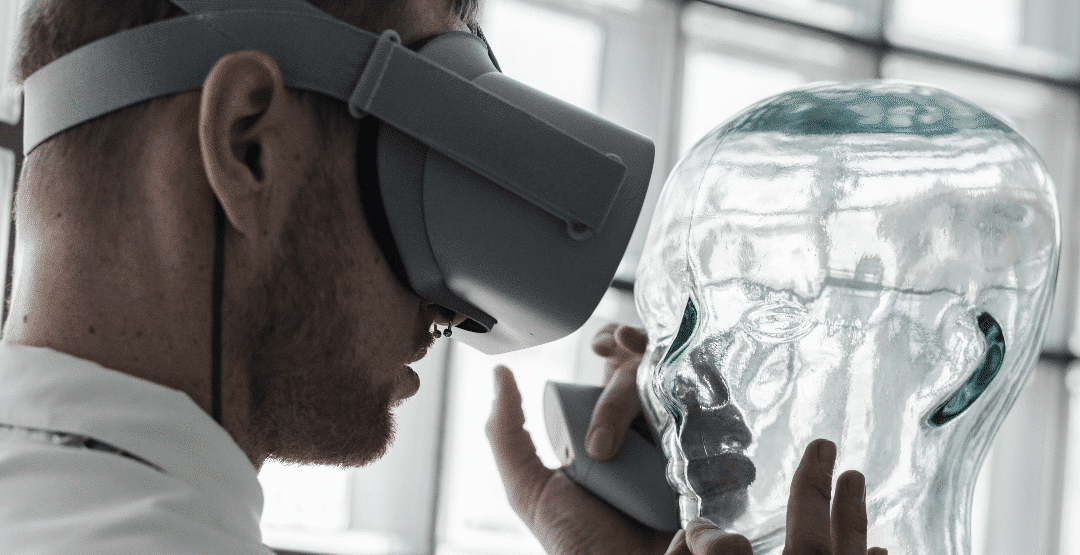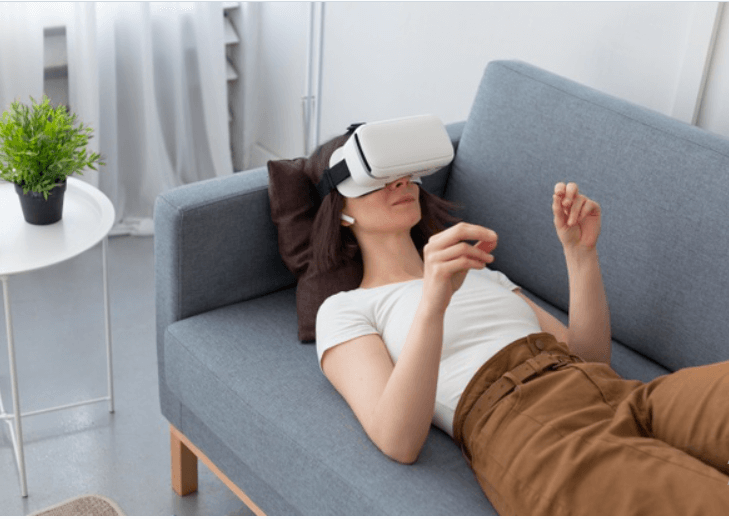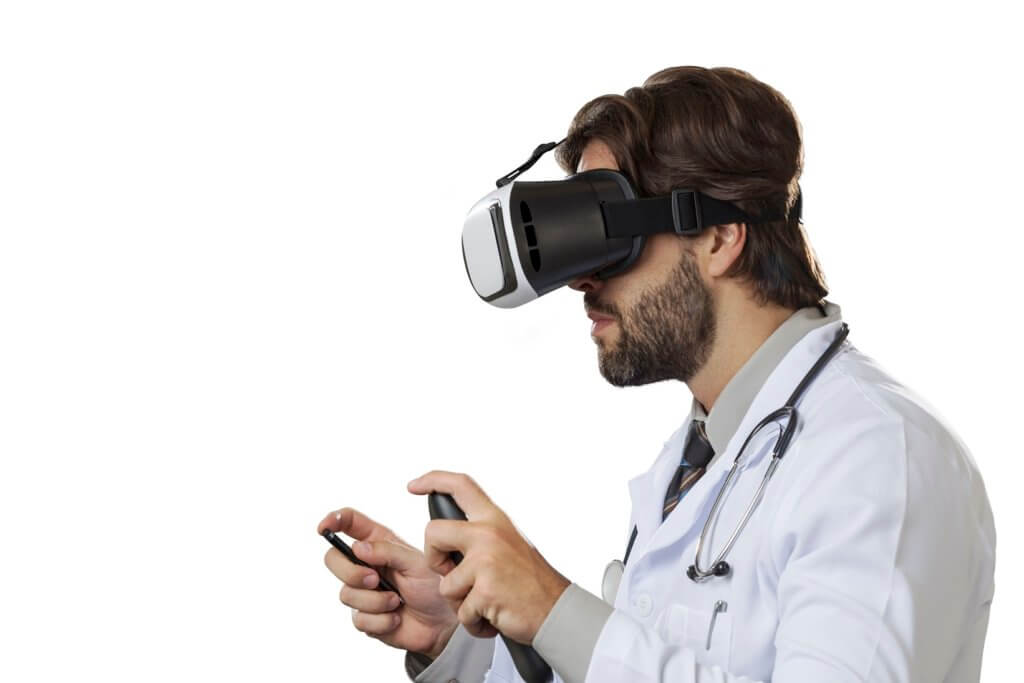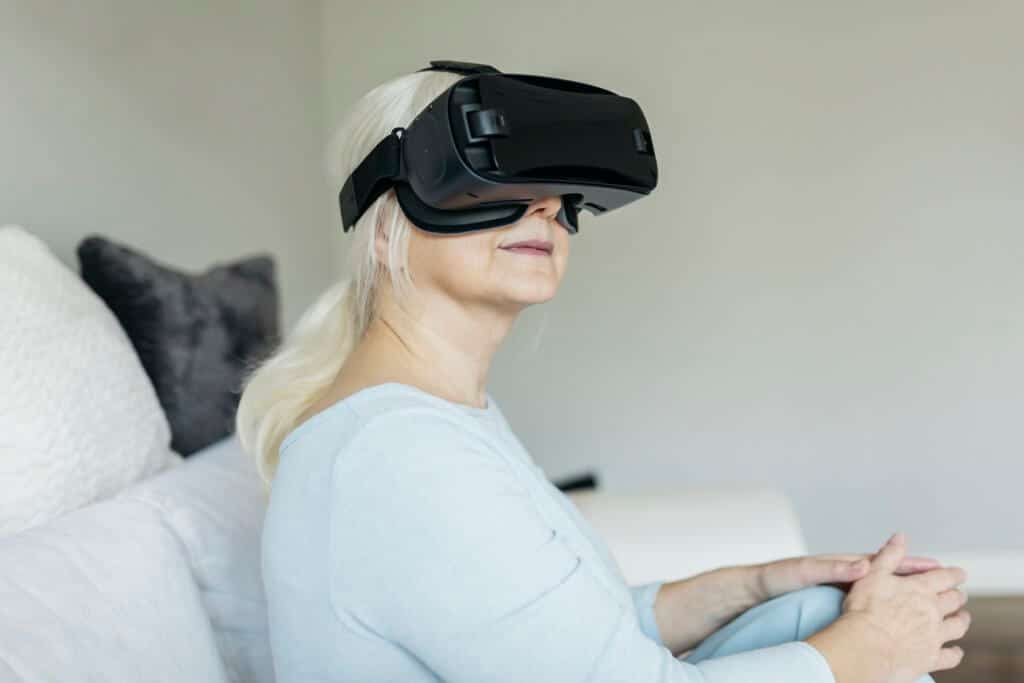Virtual reality (VR) is a computer-simulated environment that provides visual, sound and even tactile effects to the user. It allows complete immersion in the virtual scenario, as if the person was actually present there. It requires using technologies with stereoscopic displays, such as the popular headsets (special glasses that transmit the simulation).
By such features, it has been increasingly used in several areas. Includind in healthcare.
Check out how virtual reality, apllied to medicine, helps treating various diseases, training professionals and even improving the quality of life of the elderly and physically disabled.
1. Virtual reality in medicine – treatments
Pain
Imagine yourself in a beautiful, relaxing and fun place while undergoing, at the same time, an extremely painful treatment? Experts have found that virtual reality therapy fills the brain with so much information that it leaves no room to process pain sensations at the same time.
Far beyond a distraction, the technique offers a multisensory experience that engages the patient on a much deeper level than watching TV or reading, for example.
One of the first VR programs aims to treat burns. SnowWorld is a game that patients play while having wounds cleaned – a highly painful procedure. It’s simple: users throw snowballs at Penguins. However, it has shown significant results. It was developed by the University of Washington in the United States.
Therapy is also studied for the time of birth and in the treatment of Cardiological, neurological, gastrointestinal and chronic diseases. More than highly promising, this instrument has a low cost.
Phobias
Virtual reality exposure therapy (VRET) has assisted Psychiatric treatment of phobias. The technique provides the most direct approach to the patient’s fears and anxieties in a controlled environment. Instead of visualizing or mentalizing fears, patients can experience the situation in the doctor’s room, a safe and welcoming space.
During therapy, doctors and psychologists can evaluate the patient’s responses and indicate the best treatments.
Anxiety, depression and obsessive-compulsive disorder (OCD)
Virtual reality exposure therapy (VRET) is useful to treat other disorders, such as anxiety, depression, panic syndrome and obsessive-compulsive disorder (OCD).
The virtual environment enables patients to experience changes in body and mind, similar to real-life symptoms. All in a controlled scenario followed by specialist psychiatrists and psychologists.
A study, conducted at St George’s Hospital in London, evaluated the use of VR in patients suffering anxiety during hospitalization for surgical procedures. They viewed soft landscapes and listened to relaxing music through a headset.
The results: 94% were more relaxed, 80% felt less pain and 73% less anxiety.
Phantom Pain
Virtual reality in medicine has presented results even for treating phantom pain in paraplegic and amputee patients. For instance, games stimulate the user to move the missing member.
They help the brain reconnect the stimulus areas, temporarily alleviating or even eliminating pain.
2. Physiotherapy
Virtual reality assists physiotherapy in the evaluation and rehabilitation of patients with movement, postural balance and pace disorders. For example, non-immersive technologies create machine-learning exercises to customize each activity to the patients’ therapeutic needs.
Several studies have shown that VR reduces dizziness and other otoneurological symptoms and improves body balance, functional capacity and quality of life.
3. Cognitive rehabilitation
Several researches study virtual reality applied to rehabilitation and cognitive development of people suffering from neuropsychiatric disorders and autism. In the latter case, scientists from the University of Texas, in the United States, simulated virtual realities where patients interacted with other people, such as shopping in the supermarket.
After training, eight young autistic adults – without great impairment of understanding – showed significant increases in social cognitive measures of theory of mind and recognition of emotions and in the social and occupational functioning of real life.
Currently, the university offers a training program that helps young autistic people exercise their social skills.
4. Training doctors
Virtual reality applied to medicine enables both seeing details of the human body and training procedures.
Student, have you ever thought of practicing surgery in a virtual environment? Stanford University has a simulator which allows the most complete training for the future surgeon.
According to researchers, a three-dimensional virtual surgical environment can enable enhanced pre-operative planning and testing. It thus improves results of patients, decreases complication rates and improves technical skills.
Stanford Virtual Surgical Environment (VSE) is developed for rhinological procedures. The technology allows the surgeon to interact with patient-specific three-dimensional reconstructions of nasal sinus CT data sets using a modified haptic interface device, triggering a virtual endoscope.
There are also options of simulators in Brazil. For example, Eyesi aims to train intraocular cataract surgery and vitreous retinal procedures. It presents performance score and evaluates tremor, movement accuracy and repetitiveness, inter alia. Therefore, it is a good tool either for interns to practice or to introduce new techniques in ophthalmic surgery.
There are also the Da Vinci surgical systems for robotic surgery, already in their fourth generation. The equipment carries out minimally invasive surgeries in different procedures. One of its tools is a console – inspired by flight simulators – in which doctors view the high-definition 3D images and make the operative movements with their own hands, which are transmitted to the robot.
It also applies to train and requalify students, residents and specialists in attendance or within the surgical center. Thus, it is possible to analyze ethnographically the performance of the professional – alone during the procedure – by capturing images from a local camera.
5. Quality of life for the elderly and physically disabled
Elderly and physically disabled may have difficulty moving. So, imagine them able to experience cycling and diving in the sea? Some projects develop these scenarios so realistically that they even change the temperature, light and wind direction.
There are also technologies that help reduce depression in elderly people who live bedridden or in nursing homes. The startup Rendever uses virtual reality devices, personalized software and a tablet to recreate memories chosen by the elderly, such as their home during childhood.
Reviewed by Paulo Schor, ophthalmologist, free professor and director of innovation of the Federal University of São Paulo (Unifesp) and collaborator of the Faculty of Medicine of the Albert Einstein Hospital.
Are you interested in virtual reality applied to medicine? Follow Phelcom’s blog and stay on top of the main news.

 Português
Português  Español
Español  English
English 





